Top 5 Innovative Roof Designs: Revolutionizing Residential and Commercial Buildings
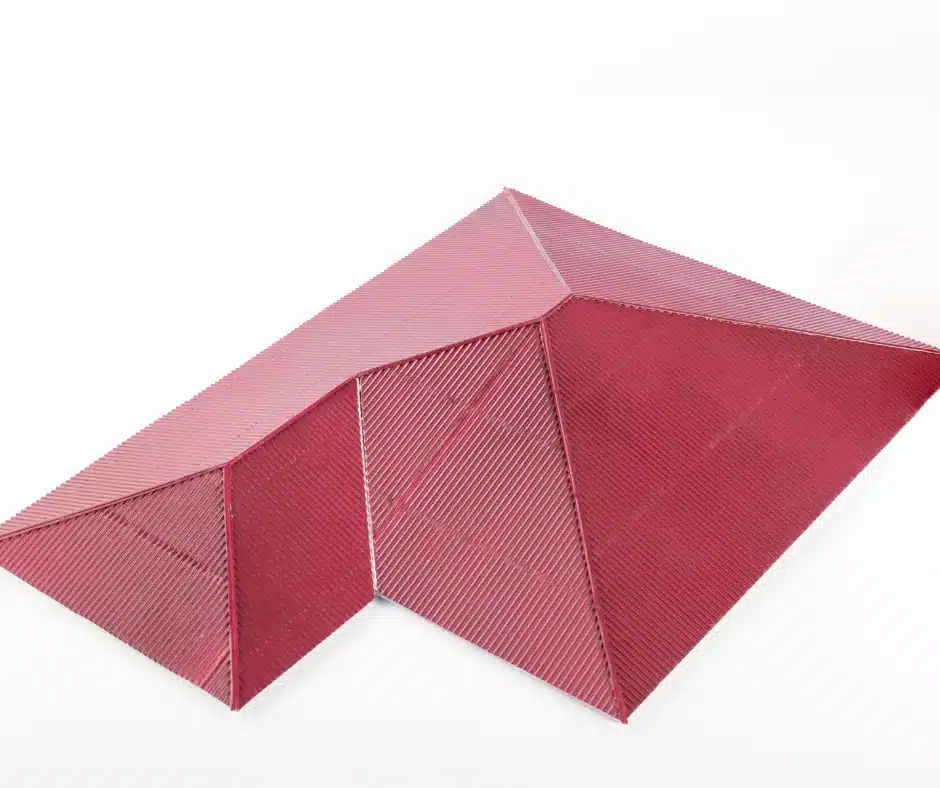
In the realm of modern architecture, roofs have transcended their fundamental purpose of providing shelter, evolving into statements of design innovation that combine aesthetic appeal, functionality, and sustainability. The traditional view of roofing as merely a protective covering has given way to a more dynamic understanding that recognizes roofs as integral components of a building’s energy efficiency, environmental impact, and architectural identity.
At All Weather Exteriors, Winnipeg’s number 1 roofing company, we pride ourselves on staying at the forefront of roofing innovation. With decades of experience serving the Winnipeg community, our team of experts combines traditional craftsmanship with cutting-edge technologies to deliver roofing solutions that exceed expectations in both performance and appearance.
This article explores five groundbreaking roof designs that are transforming the architectural landscape of both residential and commercial buildings. As we delve into these innovations, we’ll highlight their general benefits and specific adaptations and applications for Winnipeg’s unique climate challenges, from extreme temperature fluctuations to substantial snow loads.
1. Solar Integrated Roofs: Harnessing Energy While Protecting Your Home
Solar-integrated roofing represents one of the most significant advancements in modern roofing technology, seamlessly blending energy production with traditional roof functionality. Unlike conventional solar panel installations that mount on top of existing roofs, integrated solar solutions directly incorporate photovoltaic capabilities into the roofing materials.
What Are Solar Integrated Roofs?
Solar-integrated roofing systems come in various forms, each offering unique advantages while maintaining aesthetic appeal. The most common types include:
Solar Shingles: Also known as photovoltaic shingles, these look remarkably similar to conventional asphalt shingles but contain built-in solar cells that generate electricity. Manufacturers like Tesla (with their Solar Roof) and GAF Energy have developed shingles that mimic traditional roofing materials in appearance while functioning as mini solar panels.
Solar Tiles: Similar to solar shingles but designed to resemble clay or concrete tiles, these integrate solar technology into materials that complement Mediterranean, Spanish, or mission-style architecture.
Thin-Film Solar Laminates: These flexible, lightweight solar sheets can be adhered directly to certain roofing materials such as metal standing seam roofs, providing a less obtrusive solar solution.
Solar Ready Roofs: Some roofing systems are designed specifically to facilitate the future addition of solar components, with pre-installed mounting points and electrical conduits.
Benefits of Solar Integrated Roofing
Energy Production and Savings
The most obvious benefit is the ability to generate clean electricity, reducing dependence on the grid and potentially eliminating electricity bills. In Winnipeg, where electricity costs continue to rise, this translates to significant long-term savings.
Seamless Aesthetics
Unlike traditional rack-mounted solar panels that protrude from the roof surface, integrated systems offer a streamlined appearance that many homeowners and architects prefer. The visual integration maintains the building’s architectural integrity while adding a subtle touch of modernity.
Dual Functionality
Solar-integrated roofs perform double duty – protecting the building from weather elements while simultaneously generating electricity. This multifunctionality maximizes the return on investment for the roof surface area.
Increased Property Value
Homes and commercial buildings with solar-integrated roofing typically command higher resale values. Research suggests that solar installations can increase property values by approximately 4% on average.
Environmental Benefits
By generating clean, renewable energy, solar roofs significantly reduce a building’s carbon footprint. For environmentally conscious property owners in Winnipeg, this represents an opportunity to contribute to sustainability efforts while benefiting from energy independence.
Tax Incentives and Rebates
Various government programs at federal, provincial, and municipal levels offer financial incentives for renewable energy installations, further enhancing the cost-effectiveness of solar-integrated roofing.
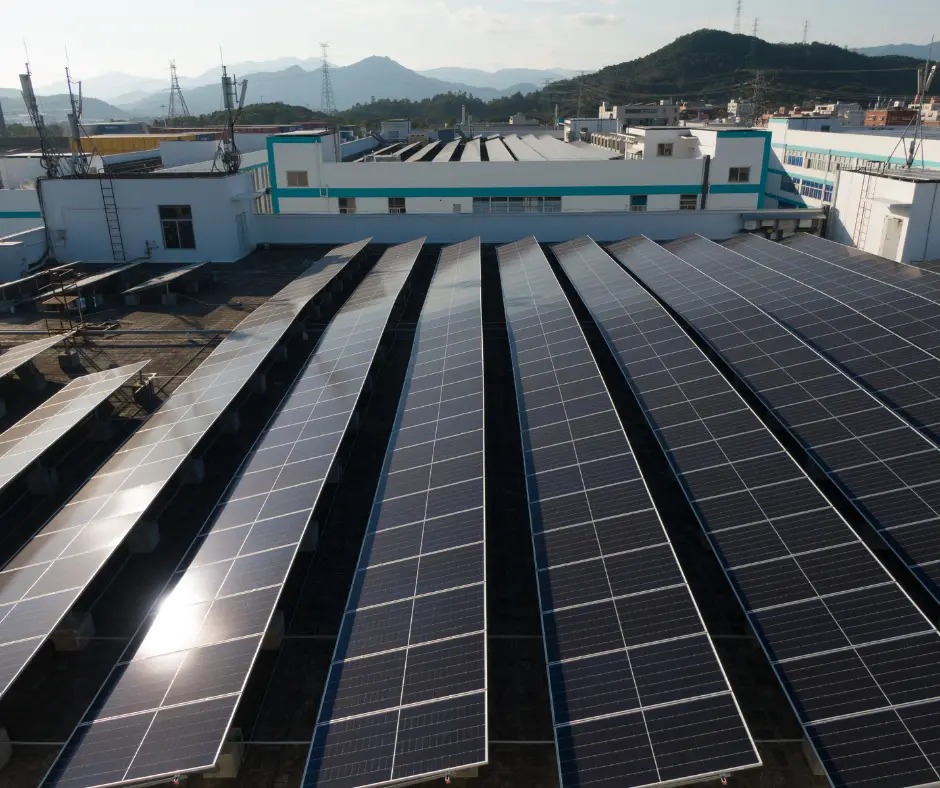
Considerations for Winnipeg’s Climate
Winnipeg’s climate presents both challenges and opportunities for solar-integrated roofing:
Snow Considerations: Winnipeg receives significant snowfall, which could potentially cover solar elements and reduce efficiency. However, the steep pitch of many Winnipeg roofs helps shed snow naturally, and the reflective properties of snow can enhance solar production through the albedo effect, increasing the amount of light reaching the panels.
Cold Weather Performance: Contrary to popular belief, solar panels often perform more efficiently in cold temperatures. While daylight hours are reduced during Winnipeg winters, the panels themselves can generate more power per hour of sunlight in cold conditions than in extreme heat.
Wind Resistance: Integrated solar solutions typically offer excellent wind resistance – an important consideration for Winnipeg’s occasional high-wind conditions. The low-profile design of solar shingles makes them less susceptible to wind damage than traditional rack-mounted panels.
All Weather Exteriors ensures that any solar-integrated roofing installations are specifically engineered to withstand Winnipeg’s intense freeze-thaw cycles, preventing moisture infiltration and ice damming issues.
Real-World Applications
In recent years, we’ve seen growing interest in solar-integrated roofing across Winnipeg. Commercial applications include office buildings looking to reduce operational costs and showcase environmental commitment, while residential applications range from new construction to roof replacement projects for energy-conscious homeowners.
2. Green Roofs: Living Architecture for Enhanced Sustainability
Green roofs, also known as living roofs, represent a return to nature in architectural design, transforming barren rooftops into thriving ecosystems. These innovative installations incorporate vegetation and growing media directly onto the roof structure, creating a living layer that offers numerous environmental, economic, and aesthetic benefits.
Structure and Composition of Green Roofs
A properly designed green roof is far more than simply placing plants on a rooftop—it’s a carefully engineered system consisting of multiple layers, each serving specific functions:
Vegetation Layer: The visible, living component consisting of carefully selected plants suited to the local climate and roof conditions.
Growing Medium: A specialized lightweight soil mixture that provides nutrients and support for the vegetation while managing water retention and drainage properties.
Filter Membrane: Prevents fine soil particles from washing into the drainage layer while allowing water to pass through.
Drainage Layer: Facilitates water movement to prevent waterlogging and root rot, often incorporating water retention elements to support plants during dry periods.
Root Barrier: Protects the waterproofing membrane from root penetration.
Waterproofing Membrane: High-quality, durable waterproofing that prevents moisture from entering the building structure.
Insulation Layer: Optional additional insulation to enhance the roof’s thermal performance.
Structural Support: The underlying roof deck must be engineered to support the additional weight of the green roof system.
Types of Green Roofs
Green roofs are typically categorized into two main types, based on the depth of the growing medium and the level of maintenance required:
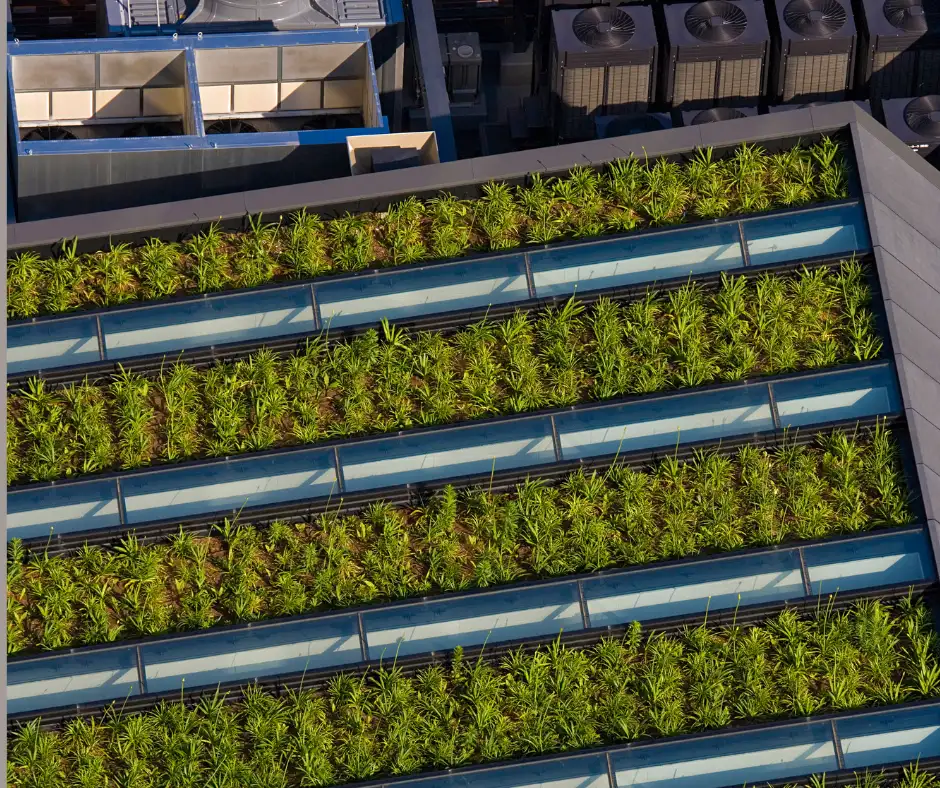
Extensive Green Roofs:
- Growing medium depth of 3-6 inches (7.5-15 cm)
- Lightweight system (15-25 pounds per square foot when saturated)
- Low maintenance requirements
- Limited plant diversity, typically sedum, moss, and other low-growing, drought-resistant species
- Generally not designed for regular human access
- Lower cost to install and maintain
Intensive Green Roofs:
- Growing medium depth of 6-12+ inches (15-30+ cm)
- Heavier system (35-100+ pounds per square foot when saturated)
- Higher maintenance requirements, similar to ground-level gardens
- Greater plant diversity, potentially including shrubs, small trees, and vegetable gardens
- Often designed as accessible garden spaces for building occupants
- Higher installation and maintenance costs
Many projects implement a semi-intensive approach, balancing aspects of both types to achieve specific goals for the space.
Benefits of Green Roofs
Enhanced Thermal Performance: Green roofs provide excellent insulation properties, reducing heat transfer through the roof. Studies have shown that they can reduce cooling needs in summer by 25-75% and provide significant insulation benefits in winter. For Winnipeg’s extreme seasonal temperature variations, this translates to substantial energy savings year-round.
Extended Roof Lifespan: By protecting the waterproofing membrane from UV radiation, extreme temperature fluctuations, and physical damage, green roofs can double or even triple the lifespan of the underlying roof structure. This longevity significantly reduces lifetime costs and environmental impact.
Stormwater Management: Green roofs can retain 70-90% of precipitation during summer months and 25-40% during winter, reducing stormwater runoff and alleviating pressure on municipal drainage systems. In Winnipeg, where spring melt and summer thunderstorms can strain infrastructure, this benefit is particularly valuable.
Air Quality Improvement: The vegetation filters air pollutants and captures carbon dioxide while releasing oxygen, contributing to cleaner urban air. One square meter of green roof can offset the annual particulate matter emissions of one car.
Urban Heat Island Mitigation: By replacing heat-absorbing conventional roofing with vegetation, green roofs help reduce urban temperatures. Surface temperatures on green roofs can be 30-40°C lower than those on conventional roofs during summer months.
Noise Reduction: The combination of soil, plants, and trapped air within the green roof system can reduce sound reflection and transmission by up to 8 decibels, creating quieter interior environments.
Biodiversity Support: Green roofs create habitat for local wildlife, particularly birds and insects, helping to maintain biodiversity in urban environments.
Aesthetic and Psychological Benefits: Research indicates that access to green space improves mental health and well-being. Green roofs create visual interest and can transform otherwise unused spaces into amenity areas for building occupants.
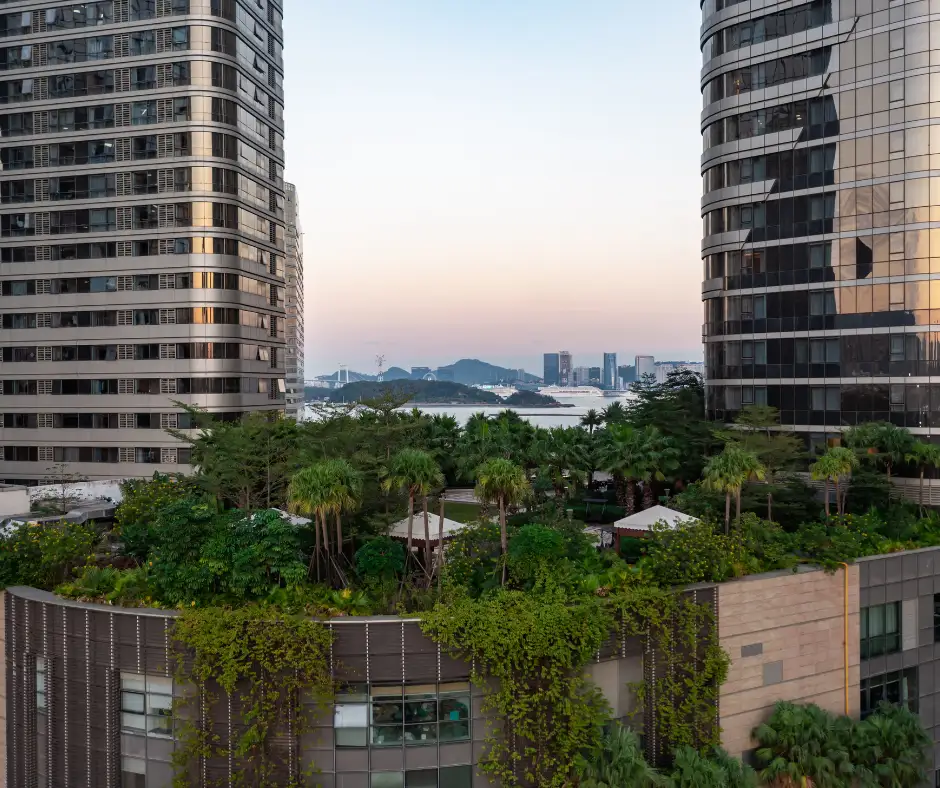
Adapting Green Roofs for Winnipeg’s Climate
Winnipeg’s continental climate, characterized by hot summers and extremely cold winters, presents unique challenges for green roof implementation. At All Weather Exteriors, we’ve developed specialized approaches to ensure success:
Plant Selection: We focus on native prairie species and extremely hardy sedum varieties that can withstand both Winnipeg’s cold winters and hot, occasionally drought-prone summers. Plants like prairie dropseed, little bluestem, and various native sedums have proven particularly successful.
Winter Protection: Our green roof designs account for snow load requirements specific to Winnipeg building codes. The insulating properties of the growing medium and snow cover provide additional protection to the waterproofing membrane during extreme cold periods.
Drainage Considerations: Our systems incorporate freeze-resistant drainage components to prevent water accumulation and ice damage during spring thaw cycles.
Irrigation Solutions: While many extensive green roofs can survive on natural precipitation alone, we often recommend supplemental irrigation systems for intensive installations, especially given Winnipeg’s occasional summer dry spells.
3. Cool Roofs: Reflective Solutions for Energy Efficiency
In the quest for more energy-efficient buildings, cool roofs have emerged as a relatively simple yet remarkably effective innovation. These specialized roofing systems are designed to reflect more sunlight and absorb less heat than standard roofs, keeping buildings cooler and reducing energy consumption.
Understanding Cool Roof Technology
Cool roofs achieve their temperature-reducing effects through two key properties:
Solar Reflectance (Albedo): This measures how efficiently a roof reflects solar energy. Traditional dark roofs might reflect only 5-15% of incoming solar radiation, while cool roofs can reflect 65-80%, preventing heat absorption.
Thermal Emittance: This indicates how efficiently a material releases absorbed heat. Cool roofing materials typically have high thermal emittance, allowing them to quickly release any heat they do absorb rather than transferring it into the building.
These properties combine to create the Solar Reflectance Index (SRI), a composite measurement of a material’s ability to reject solar heat. Higher SRI values indicate better “coolness” performance.
Types of Cool Roofing Materials
Reflective Roof Coatings: These liquid-applied products can transform existing roofs into cool roofs. Options include:
- White elastomeric coatings (for low-slope roofs)
- Specialized aluminum-pigmented reflective coatings
- Colored pigments that reflect infrared radiation while maintaining visible color
Cool Roof Membranes: These factory-manufactured sheet materials include:
- Thermoplastic polyolefin (TPO)
- Polyvinyl chloride (PVC)
- Ethylene propylene diene terpolymer (EPDM) with reflective laminate
Reflective Shingles and Tiles: For sloped roofs, options include:
- Asphalt shingles with reflective granules
- Clay or concrete tiles with reflective glazes or coatings
- Metal roofing with specialized reflective finishes
Modified Bitumen with Cool Surfacing: These reinforced asphalt membranes include factory-applied reflective mineral granules or reflective films.
Benefits of Cool Roofs
Reduced Energy Consumption: By minimizing heat absorption, cool roofs can reduce air conditioning needs by 10-30%. The U.S. Department of Energy estimates annual energy savings of up to 50 cents per square foot in hot climates.
Extended Roof Lifespan: Lower roof temperatures reduce thermal stress and degradation of roofing materials. Cool roofs typically last 15-30% longer than conventional counterparts, reducing replacement frequency and associated costs.
Improved Indoor Comfort: Even in buildings without air conditioning, cool roofs help maintain more comfortable interior temperatures during hot weather.
Peak Energy Demand Reduction: By reducing the need for air conditioning during the hottest parts of the day, cool roofs help reduce stress on the electrical grid during peak demand periods.
Urban Heat Island Mitigation: When implemented across multiple buildings, cool roofs help reduce ambient air temperatures in urban areas, counteracting the urban heat island effect.
Environmental Benefits: Lower energy consumption translates to reduced greenhouse gas emissions and air pollution. Additionally, many cool roof products have high recycled content and are themselves recyclable at end-of-life.
Cool Roofs in Winnipeg’s Climate Context
While cool roofs are often associated with hot, sunny climates, they offer significant benefits for Winnipeg’s variable conditions:
Summer Performance: During Winnipeg’s warm summers, when temperatures regularly exceed 25°C (77°F) and can reach above 30°C (86°F), cool roofs reduce cooling loads and improve comfort in both air-conditioned and non-air-conditioned buildings.
Winter Considerations: The potential “winter penalty” (reduced beneficial heat gain during cold months) is offset by several factors in Winnipeg:
- Most commercial buildings generate excess internal heat even in winter
- Snow cover naturally creates a reflective, insulating layer during the coldest months
- Modern cool roof systems can be paired with sufficient insulation to prevent heat loss
- The angle of the winter sun reduces potential heat gain from conventional dark roofs
- Studies show that in northern climates, summer cooling savings typically outweigh any winter heating penalties
Durability in Freeze-Thaw Cycles: Many cool roof materials exhibit excellent resilience to Winnipeg’s extreme temperature fluctuations and frequent freeze-thaw cycles, extending roof lifespan and reducing maintenance costs.
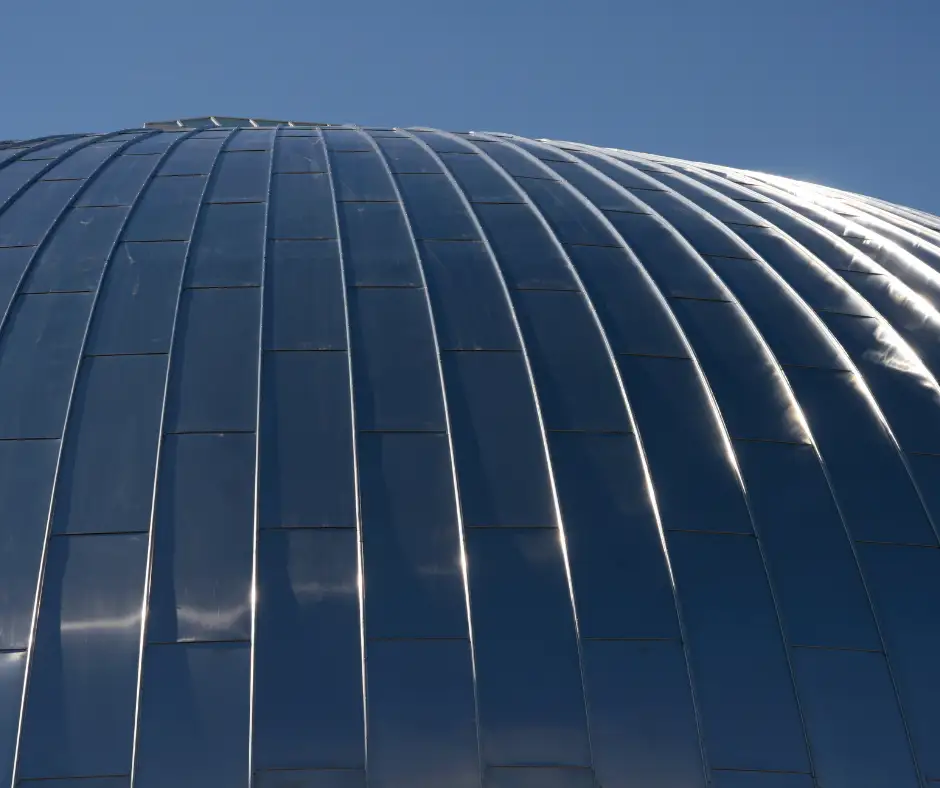
Implementation Strategies for Winnipeg Buildings
At All Weather Exteriors, we recommend tailored cool roof approaches based on building type and use:
For Commercial Low-Slope Roofs: TPO or PVC membranes with SRI values exceeding 78 provide excellent reflectivity and durability in Winnipeg conditions. These materials remain flexible in cold temperatures and resist cracking during freeze-thaw cycles.
For Residential Sloped Roofs: “Cool color” asphalt shingles or metal roofing with specialized finishes offer moderate solar reflectance while maintaining traditional aesthetic options and outstanding snow-shedding capabilities.
For Retrofit Applications: Reflective roof coatings compatible with existing roof substrates can transform traditional roofs into cool roofs without full replacement, offering an economical path to energy efficiency.
4. Kinetic and Dynamic Roofs: Architecture in Motion
Perhaps the most visually striking of modern roofing innovations, kinetic and dynamic roofs represent a paradigm shift in how we conceptualize building envelopes. These remarkable systems transform static structures into responsive, adaptable components that can change configuration in response to environmental conditions, user preferences, or programmed patterns.
The Concept of Kinetic Roofing
Kinetic roofs incorporate movable elements that can change position, orientation, or configuration through various mechanical, pneumatic, or hydraulic systems. Unlike traditional fixed roofing, which represents a compromise between competing needs (such as maximizing light versus minimizing heat gain), kinetic roofs can transform to optimize for different priorities as conditions change.
Types of Kinetic and Dynamic Roof Systems
Retractable Roofs
These systems can open completely or partially to expose interior spaces to the outdoors. Applications range from stadium roofs that can close during inclement weather to residential installations that create convertible living spaces.
Louvered Systems
Consisting of adjustable slats or panels that can rotate to various angles, these systems precisely control light penetration and air circulation while maintaining weather protection.
Responsive Facades
While technically encompassing more than just the roof, these integrated systems treat the entire building envelope as a dynamic membrane that responds to environmental conditions.
Deployable Structures
Inspired by origami and tensegrity principles, these roofs can expand, contract, or change shape through folding mechanisms or tensioned elements.
Smart Shading Systems
These incorporate movable elements specifically designed to track the sun’s position and optimize shading patterns throughout the day and across seasons.
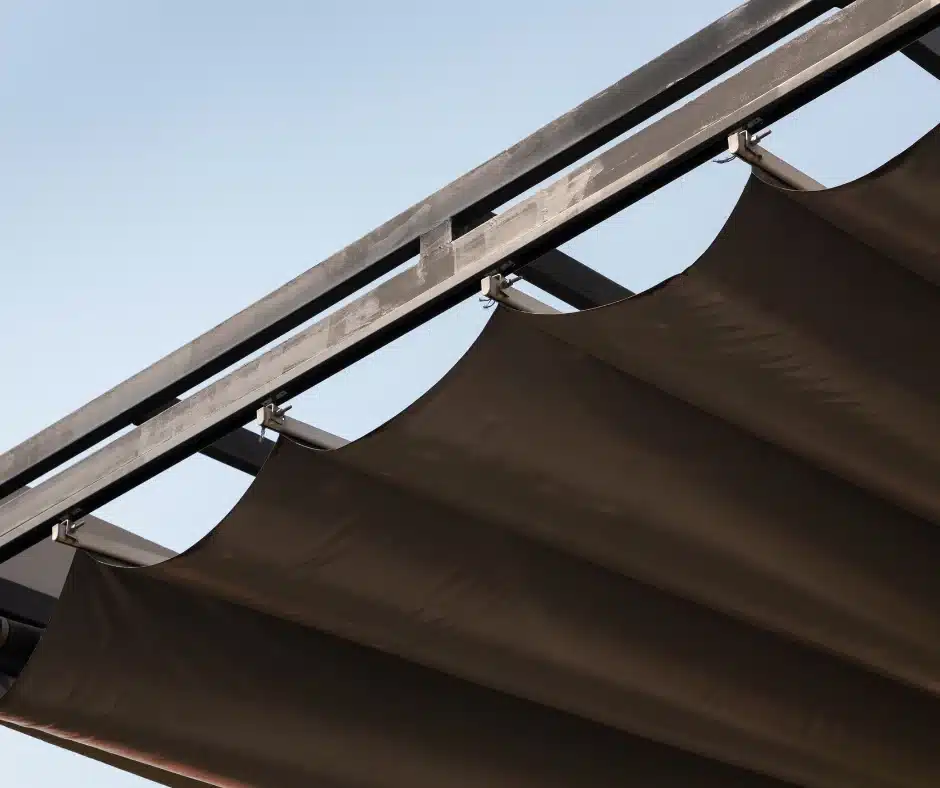
Benefits of Kinetic Roof Technologies
Optimized Natural Light: By adjusting to the sun’s changing position, kinetic elements can maximize daylight harvesting while preventing direct glare and heat gain—reducing artificial lighting needs while enhancing occupant comfort.
Thermal Performance Control: Dynamic adjustments allow for heat gain during winter months and rejection during summer, reducing HVAC loads year-round. This adaptive capacity is particularly valuable in climates with significant seasonal variations like Winnipeg.
Natural Ventilation Enhancement: Operable elements can facilitate natural airflow and passive cooling when conditions permit, reducing mechanical ventilation requirements.
Weather Responsiveness: Automated systems can rapidly reconfigure in response to changing weather conditions, providing protection from sudden storms while allowing openness during favorable conditions.
Space Flexibility: For commercial and institutional buildings, kinetic roofs can transform spaces from indoor to outdoor and back, multiplying the functional possibilities of a single area.
Visual Drama and Brand Identity: The dynamic nature of these roofs creates distinctive architectural statements that can become signature elements for businesses and institutions.
Optimized Energy Generation: When combined with integrated solar technologies, movable elements can maximize energy production by maintaining optimal orientation to the sun.
Engineering and Technological Considerations
The successful implementation of kinetic roofs requires sophisticated engineering and technology integration:
Structural Engineering: Movable elements must maintain structural integrity while accommodating motion, often requiring specialized load calculations and safety factors.
Drive Systems: Electric motors, hydraulic systems, or pneumatic mechanisms provide the power for movement, each with different applications depending on scale and force requirements.
Control Systems: Advanced sensors monitor environmental conditions (temperature, wind speed, precipitation, sun position), while programmable logic controllers execute movement algorithms based on these inputs.
Material Selection: Materials must balance competing priorities of weight, durability, weather resistance, and mechanical performance.
Weatherproofing: Ensuring water-tightness at joints and transitions between moving elements presents unique challenges requiring specialized gasketing and sealing solutions.
Maintenance Planning: Moving parts necessitate regular maintenance programs to ensure continued performance and safety.
Adapting Kinetic Roofs for Winnipeg’s Climate
Winnipeg’s extreme climate presents both challenges and opportunities for kinetic roof systems:
Winter Considerations: Mechanisms must be designed to function reliably in extreme cold and prevent snow and ice accumulation from interfering with movement. Heating elements may be incorporated into critical components to ensure operation during freezing conditions.
Wind Resistance: Winnipeg experiences significant wind events, requiring robust structural design and automatic safety protocols that move elements to their most stable positions during high winds.
Snow Load Management: Dynamic elements can be programmed to adjust pitch during snowfall to facilitate shedding, reducing static load buildup that can stress structures.
Seasonal Programming: Control systems can implement different operational patterns based on seasonal needs—maximizing sun exposure during winter while prioritizing shade and cooling during summer.
5. Biomimicry in Roof Design: Nature-Inspired Innovation
Biomimicry—the practice of emulating nature’s time-tested patterns and strategies to solve human challenges—is revolutionizing roofing design by drawing inspiration from biological adaptations refined over millions of years of evolution. This approach doesn’t merely imitate natural appearances; rather, it translates the underlying principles of natural systems into advanced roofing solutions.
Understanding Biomimetic Roof Design
Biomimetic roof design applies lessons from nature at various levels:
Form and Structure: Adopting shapes and structural arrangements found in nature that provide exceptional strength-to-weight ratios or unique functional advantages.
Process and Function: Replicating natural processes such as self-cleaning, water collection, or temperature regulation.
System and Ecosystem: Designing roofs as integrated systems that perform multiple functions simultaneously while working harmoniously with their broader environment.
Material Properties: Developing new materials that mimic the remarkable characteristics of natural substances, such as self-healing capabilities, adaptive responses, or exceptional durability with minimal material use.
Innovative Examples of Biomimicry in Roofing
Self-Cleaning Surfaces Inspired by Lotus Leaves
The lotus effect—named after the lotus plant’s remarkable ability to remain clean despite growing in muddy environments—has inspired specialized roof coatings with microscopic textures that mimic lotus leaf surfaces. These superhydrophobic (extremely water-repellent) surfaces cause water to bead up and roll off, carrying dust and contaminants away. This passive self-cleaning mechanism reduces maintenance requirements and maintains reflectivity for cool roofs over time.
Water Collection Systems Inspired by Desert Beetles
The Namib desert beetle survives in one of Earth’s driest environments by collecting water from morning fog on specialized areas of its shell. Biomimetic roofing systems inspired by this adaptation incorporate hydrophilic (water-attracting) and hydrophobic (water-repelling) regions to efficiently capture atmospheric moisture. In Winnipeg’s variable climate, such systems could supplement rainwater harvesting during dry periods.
Structural Designs Inspired by Seashells and Bones
Natural structures like seashells and bones achieve remarkable strength through optimized material distribution rather than solid mass. Biomimetic roof structures adopt similar principles, creating lightweight yet extraordinarily strong systems through strategic geometry. These designs maximize strength while minimizing material use, reducing both environmental impact and structural load.
Adaptive Insulation Inspired by Animal Fur and Feathers
Just as animals regulate temperature through specialized coatings, advanced biomimetic roofing systems can adapt their insulating properties based on environmental conditions. These systems provide enhanced insulation during cold periods while allowing heat dissipation during warm weather—a particularly valuable function for Winnipeg’s extreme seasonal variations.
Self-Healing Materials Inspired by Biological Tissues
Perhaps most revolutionary are emerging self-healing materials inspired by biological tissues. These incorporate microcapsules of repair compounds that automatically release when cracks form, sealing small damages before they propagate into serious problems. For Winnipeg roofs subjected to extreme thermal cycling and UV exposure, self-healing capabilities could dramatically extend service life.
Benefits of Biomimetic Roof Design
Enhanced Durability: By adopting strategies that have withstood evolutionary pressures for millions of years, biomimetic designs often achieve exceptional longevity with minimal maintenance requirements.
Resource Efficiency: Nature typically operates with extraordinary material efficiency, and biomimetic designs inherit this characteristic, often requiring less material to achieve equal or superior performance.
Multifunctionality: Natural systems rarely serve only one purpose, and similarly, biomimetic roofs typically provide multiple benefits simultaneously—structural support, weather protection, energy efficiency, and environmental integration.
Resilience and Adaptability: Biomimetic designs often incorporate passive adaptive mechanisms that respond to changing conditions without requiring external energy or complex controls.
Reduced Environmental Impact: The efficiency and longevity of biomimetic systems typically result in lower lifecycle environmental impacts compared to conventional alternatives.
Application in Winnipeg’s Climate Context
Winnipeg’s challenging climate makes it an ideal testing ground for biomimetic roofing solutions:
Thermal Regulation
Biomimetic approaches to passive thermal regulation can help manage Winnipeg’s extreme temperature swings. For example, structures inspired by termite mounds—which maintain remarkably stable internal temperatures despite external variations—can enhance natural ventilation and thermal buffering.
Ice and Snow Management
Surface treatments inspired by the antifreeze properties of certain plants and animals can reduce ice adhesion and facilitate snow shedding, addressing one of Winnipeg’s most significant roofing challenges.
Wind Resistance
Aerodynamic forms inspired by natural structures that withstand high winds (such as certain seed pods and shells) can reduce wind uplift forces during Manitoba’s occasional strong wind events.
UV and Weathering Resistance
Protective mechanisms inspired by desert plants that endure intense solar exposure can enhance roofing materials’ resistance to UV degradation during Winnipeg’s sunny summer months.
Integrating Innovative Roof Designs in Winnipeg: The All Weather Exteriors Approach
While each of the innovative roof designs discussed offers distinct advantages, the true power of modern roofing comes from the thoughtful integration of multiple approaches to address specific building needs and site conditions.
At All Weather Exteriors, we leverage our deep understanding of Winnipeg’s unique climate challenges to develop customized roofing solutions that may incorporate elements from several innovative approaches.
Climate-Specific Considerations
Winnipeg’s climate presents distinct challenges that must be addressed in any roofing design:
Extreme Temperature Variations: With annual temperature swings exceeding 70°C between summer highs and winter lows, roofing materials must maintain performance across an extraordinary range of conditions.
Significant Snow Loads: Roof structures must support substantial snow accumulation while managing spring melt effectively.
Freeze-Thaw Cycling: Materials must withstand frequent freeze-thaw cycles without degradation or moisture infiltration.
Strong UV Exposure: Despite cold winters, Winnipeg receives abundant sunshine, requiring excellent UV resistance in roofing materials.
Occasional Severe Weather: From summer thunderstorms to winter blizzards, roofs must withstand periodic extreme weather events.
The Consultation and Design Process
Our approach to innovative roofing begins with a comprehensive consultation process:
- Assessment: We evaluate the building’s structural characteristics, energy performance, aesthetic goals, and budget considerations.
- Climate Analysis: We consider the microclimate of the specific site, including sun exposure, wind patterns, and drainage requirements.
- Performance Modeling: For larger projects, we may employ energy modeling and performance simulations to quantify the benefits of different roofing approaches.
- Design Integration: We develop integrated solutions that may incorporate elements from multiple innovative roof types—for example, combining solar integration with cool roof technologies or incorporating biomimetic elements into green roof designs.
- Implementation Planning: We create detailed specifications and installation protocols tailored to the project’s unique requirements and Winnipeg’s climate conditions.
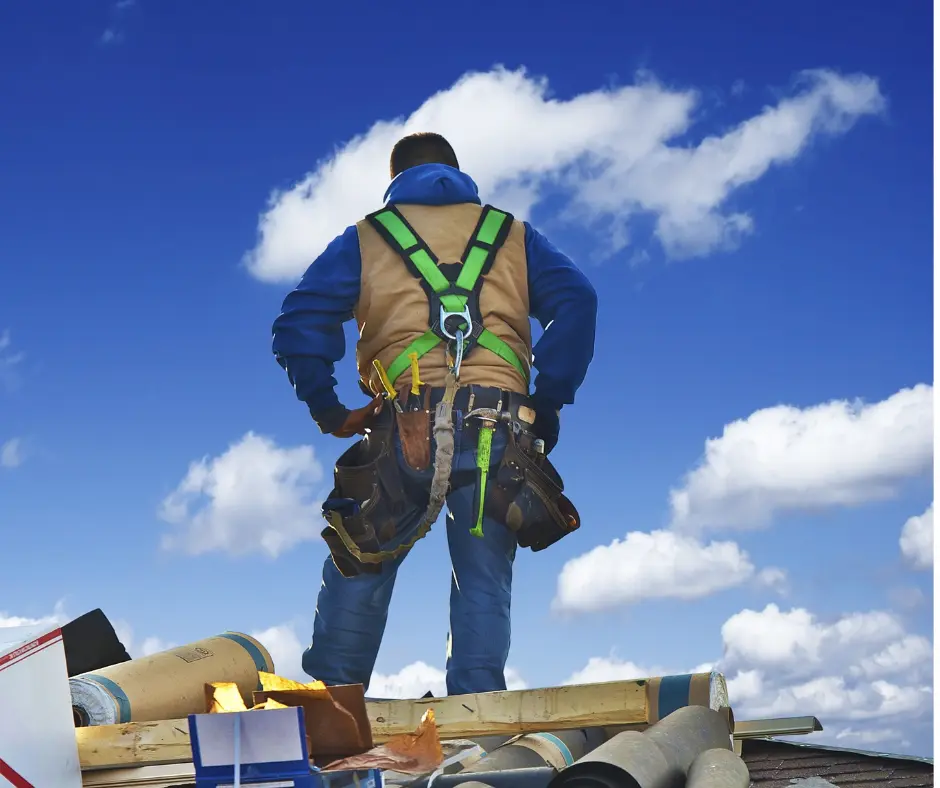
Embracing Roofing Innovation for Winnipeg’s Future
As we’ve explored throughout this article, modern roof designs have evolved far beyond basic weather protection to encompass energy production, environmental integration, dynamic responsiveness, and biological inspiration. These innovations offer extraordinary opportunities to enhance building performance, reduce environmental impact, and create more comfortable, sustainable spaces.
In Winnipeg’s challenging climate, thoughtfully implemented roofing innovations can provide exceptional value—reducing energy costs, extending roof lifespan, improving indoor comfort, and enhancing property value. The key lies in selecting and adapting these innovations to address specific local conditions and building requirements.
At All Weather Exteriors, we remain committed to bringing the best of these innovative approaches to Winnipeg’s residential and commercial buildings. Our team continually updates our knowledge and skills to ensure we can implement these advanced technologies with the expertise and attention to detail that complex systems require.
Whether you’re planning new construction, contemplating a roof replacement, or simply exploring ways to improve your building’s performance, we invite you to contact us to discuss how these innovative roofing approaches might benefit your specific project. Our consultations include a detailed analysis of your building’s needs and clear explanations of available options, helping you make informed decisions that balance initial investment against long-term returns.
As Winnipeg’s leading roofing company, we take pride in not just keeping pace with industry innovations but actively participating in their adaptation to our unique local conditions. Together, we can create roofs that don’t merely protect buildings but actively contribute to a more sustainable, comfortable, and visually striking urban environment.
Ready to explore how innovative roofing solutions can enhance your Winnipeg property?
Contact All Weather Exteriors today for a professional consultation. Our experienced team will assess your specific needs and recommend custom solutions that combine cutting-edge innovation with proven reliability for Winnipeg’s challenging climate.
Call us at 204-5102959 or schedule your consultation and take the first step toward a roof that does more than just cover your building—it improves it.

Leave a Reply
You must be logged in to post a comment.